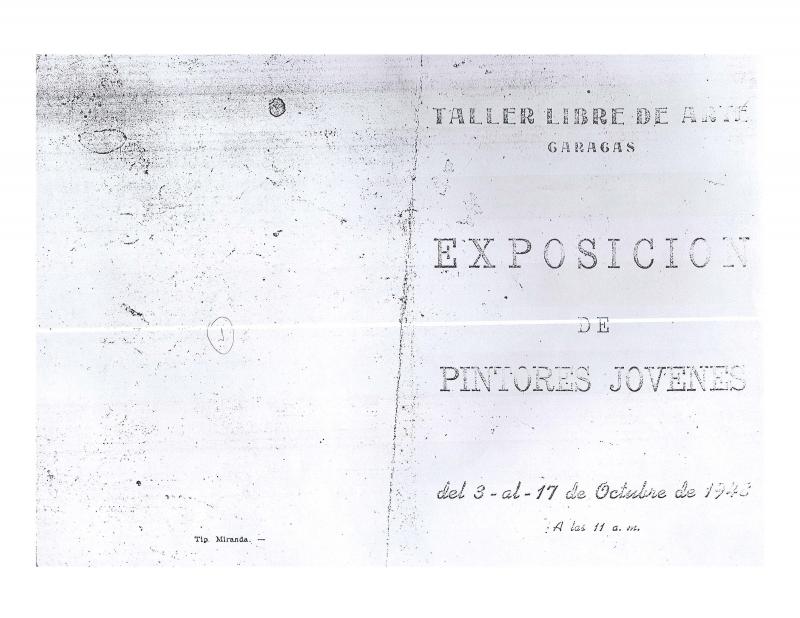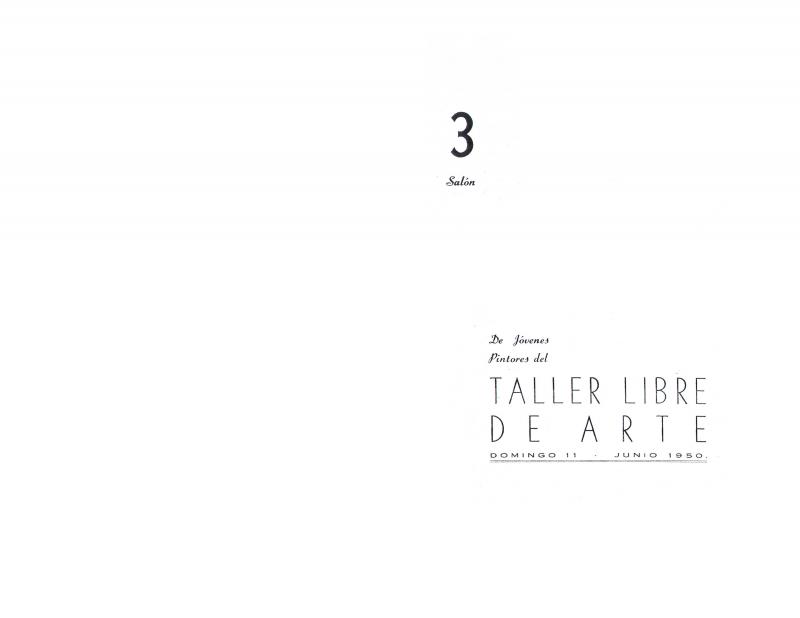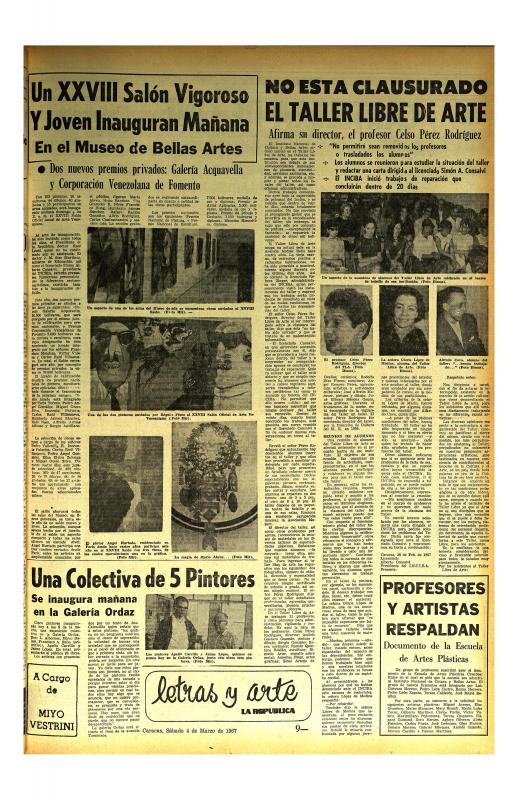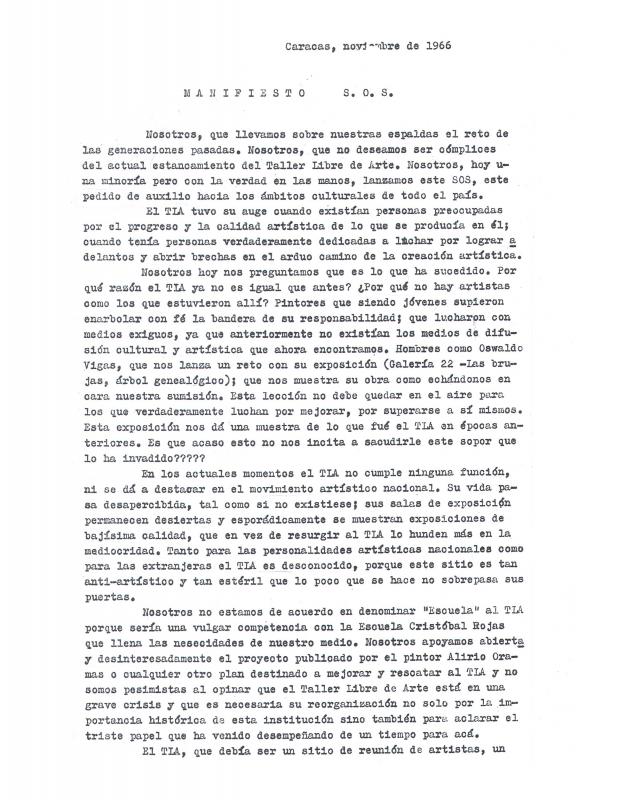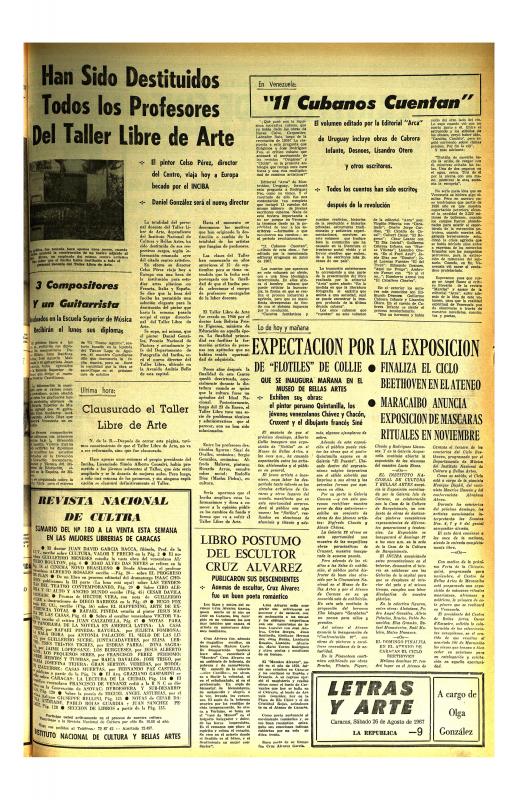The introductory essay for this tribute—that included the exhibition of reproductions and one original work (apparently a José Clemente Orozco print)—was written by Alirio Oramas (1924?2016), who at that time was the director of the TLA (Taller Libre de Arte), as well as being one of the founders. The tribute was not unwarranted since the Mexican muralist had recently died. César Rengifo was one of the speakers at the event; he had studied mural painting in Mexico in 1937 and was familiar with Orozco’s work. The true social realists involved with the TLA were José Fernández Díaz, Pedro León Castro, and Rengifo; of the three, Rengifo was the only one to stick to an aesthetic of “committed art” throughout his career. His acceptance of Marxism and his involvement with the PCV (Partido Comunista de Venezuela) also indicated his political leanings. Gabriel Bracho, another committed aesthetic activist, was only involved with one of the group’s shows, the Exposición de pintura de los jóvenes del Taller Libre de Arte (March 18, 1950). In addition to the above, it should be noted that Orozco was a passionate revolutionary, and he was important because of what he represented to Latin America. After the military coup that ousted the writer and Venezuelan president Rómulo Gallegos (November 24, 1948), both the PCV and Acción Democrática (the deposed president’s party) were proclaimed illegal. Oddly enough, the TLA had always been financed by the Ministerio de Educación Nacional. That was the historical-political backdrop to this tribute to Orozco. Some months earlier (February 1949), after the exhibition of Alejandro Otero’s Cafeteras series at the Museo de Bellas Artes (Caracas), Rengifo took part in the debate among social realists that challenged Abstraction. Miguel Arroyo was one of the writers who spoke up in defense of the latter trend (see El Nacional, February 21, 1949). The debate began in 1948 at the Instituto Venezolano–Soviético de Caracas, with Rengifo (who favored a social kind of painting) pitted against Arroyo (who stood for non-Figurative art).
[Regarding articles about the TLA, see in the ICAA digital archive the prologues by Bernardo Chataing about the TLA’s first group show, “Texto presentación” (doc. no. 1101666), and by Luis Berroterán “Texto presentación 3 Salón de jóvenes pintores del Taller Libre de Arte” (doc. no. 1063067); the articles “Es necesario reorganizar El Taller Libre de Arte” (unsigned) (doc. no. 1051925); “No está clausurado el Taller Libre de Arte” (unsigned) (doc. no. 1167909); and “Manifiesto S.O.S.” (unsigned) (doc. no. 1051896); and finally the article that describes the Taller’s demise and replacement with another institution, the INCIBA, “Han sido destituidos todos los profesores del Taller Libre de Arte” (doc. no. 1172267)].

